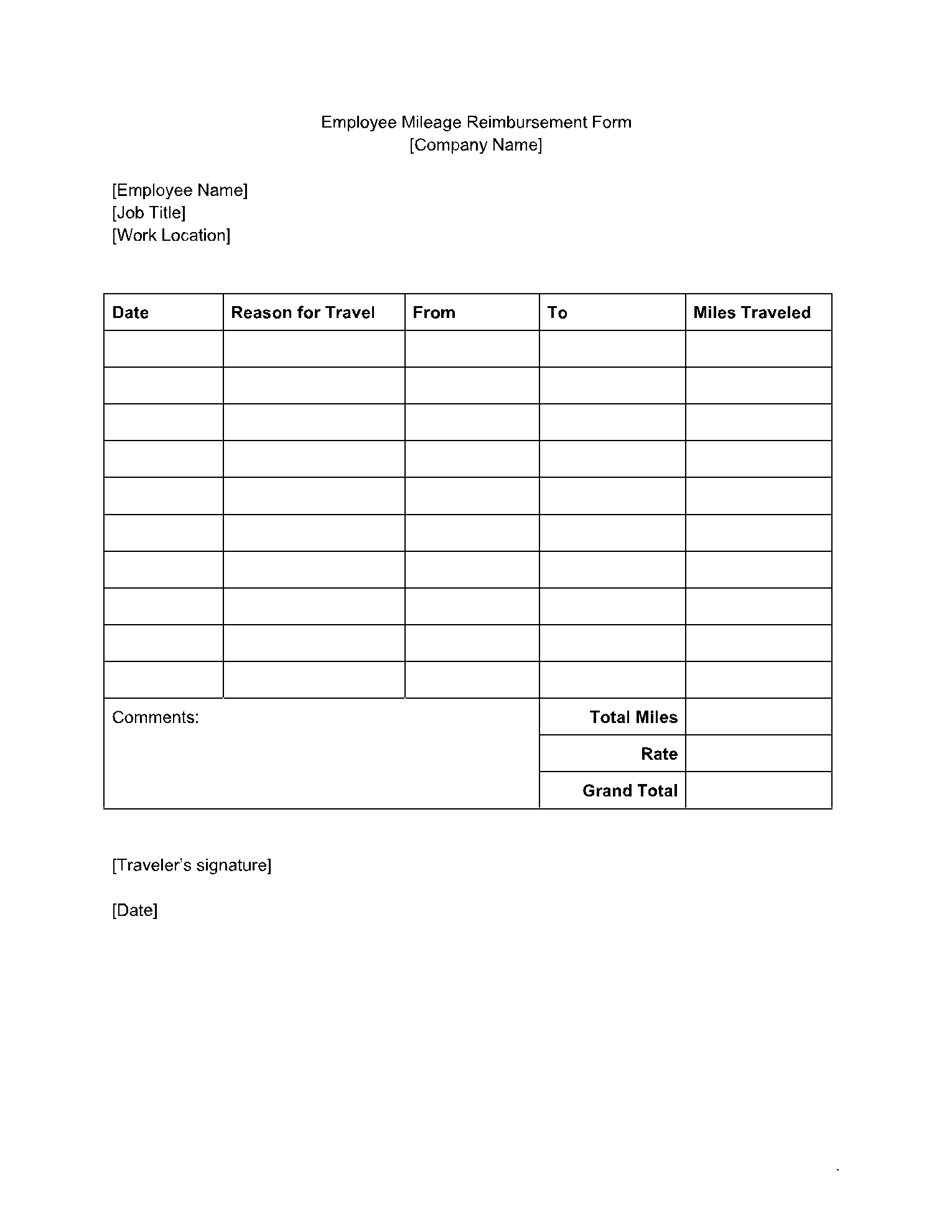Employees working in various organizations have to commit to field jobs as well. The field jobs or the marketing job or alike usually include business trips and traveling expenses. Such traveling expenses incurred by the employees are not paid by them. This is when mileage Reimbursement form comes into being. With this, also comes the IRS Standard Mileage rate.
Let's understand both of these terms in this article.
What Is a Mileage Reimbursement Form?
Unlike typical employee forms such as evaluation forms and termination letter, the mileage Reimbursement form is a type of employee document that needs to be filled by employees to have their traveling expenses reimbursed. Such traveling expenses are the expenses incurred in traveling for business purposes. However, this doesn’t include commuting to and from the company, but the expenses on business travel.
Moreover, these traveling expenses are calculated with the help of the IRS Standard Mileage rate. Currently, the 2021 IRS mileage rate is set at 57.5 cents per mile.
What to Include in a Mileage Reimbursement 2021 Form?
Various important mentions should form part of a Mileage Reimbursement form to hold them effective. Some of the important elements include:
- Complete details of an employee like name, department, campus ID, project, job, etc
- Complete details of the vehicle used
- The purpose of the visit like deputation, marketing, etc
- Date of traveling
- The origin place of traveling and destination place
- The total number of distance covered or the odometer readings from beginning to end of the journey
- The IRS mileage rate considered in calculating the total miles traveled
- The reimbursement amount the employee is entitled to
- The signatures of the employee, employer and approver department
- Each project details in case of multiple reimbursements at the same time
What Are the Benefits of the Mileage Reimbursement Forms?
How will an employer know about your traveling expenses without communicating it to them in detail? They won't blindly transfer the amount to your account, as told by you. To maintain the authenticity and reliability of the mileage reimbursements among the employees, mileage forms play an important role. Here are some of the benefits associated with the same:
- Enables tracking of travel spending
Mileage reimbursement forms help employers to keep track of how all employees are spending on business travels. Any excessive spending can be easily tracked through previous records of travel spending in the same field. This helps in minimizing the cost of overall travel spending. Moreover, having all forms makes it easy for the employer to calculate the overall spending on travel so that they fix the maximum reimbursement amount, if needed.
- Detailed information on travels
Mileage reimbursement forms urge employees to submit detailed information on their travel expenditure. This refrains employees from submitting overstatement of travel expenditure to an extent.
- Faster mileage reimbursements
Mileage reimbursement forms enable the employer to act upon them faster, so the reimbursement is made faster too. When they have all the form received digitally or physically, it takes no time to reimburse the amount as opposed to verbal submission.
- Acts a record
Both the employee and employer can gain access to their mileage reimbursement forms when required. This may be while preparing their income statement, claiming tax refunds or alike. Mileage reimbursements form acts as great future evidence in cases of excess or deficit reimbursements.
- Easy recording of miles traveled
Filling a mileage reimbursement form every time to go out for business travel is the best and easiest way to keep track of your mileage. Mileage Reimbursement forms include space for everything that needs to be recorded to keep track of your mileage.
Tips for Mileage Tracking for Reimbursement
Well, mileage tracking holds great importance if you want complete reimbursement of your travel expenses.
Recalling your travels at the end of every month or year will never work out for you. Moreover, this way, you may end up losing your reimbursement amount instead of getting any of it. So, here are tips for mileage tracking for reimbursement:
- Make it a habit to note all the expenses down every day. Believe us; it will get into your habit. In companies where no estimates work, faking them is not at all worthy as well. Mileage reimbursement forms can help you with that.
- If you are not into manually recording it every day, try using expense tracking apps to make it handier and more convenient.
- The IRS comes up with a new IRS Standard mileage Rate every year. Remember not to calculate your total reimbursement amount with the wrong figures.
- The standard mileage rate cannot be used for more than five vehicles at the same time.
- Also, if you use the same vehicle for your personal as well as work purposes, you will have to calculate your business use percentage separately. For this, apart from recording everything, you will also need to record your mileage at the beginning of the year and the end of the year as well.
- Make sure you know what expenses your company covers in mileage reimbursement to get reimbursement in full. Most companies also provide flat car expenses that cover fuel charges, repairs, and other wear and tear expenses.
- Mileage can also be tracked through Google Maps.
However, as nothing can beat the convenience of reading paperback novels, no technological idea can beat the convenience of tracking mileages for reimbursements through mileage reimbursement forms. Keep a form in your vehicle, and you are good to record before to step out of your car.
CocoSign provides numerous form templates for employees at your disposal. Choose one that fits your needs, or customize it as per your will. Choice is yours.
